Hello, everyone!
May has simply flown by. The past two weeks have been crazy. I got back from Bulgaria, flew off to the states to see my little sister graduate high school, and came back to Edinburgh a week later to get stuck into my dissertation. It’s like I finally sat down to take a breath and a whole month was gone. But I have (finally) managed to get back on track with a couple posts ready to roll!
During the month of May I was lucky enough to spend a couple of weeks in Bulgaria with a few people from my course working at a field school run by our lecturer. We were there to process archaeological material from excavations that took place several years ago. It was my first time visiting Eastern Europe, and good food, sunny weather, and friendly people made it an unforgettable experience. I am sad I only got to see a small corner of the country, but I cannot wait to go back.
So here we go, without further ado –
Ten Things I Didn’t Know Before Visiting Nesebar, Bulgaria
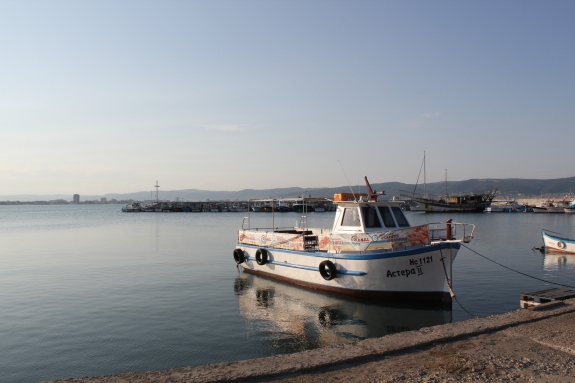
Nesebar, 2016
1. You can spell ‘Nesebar’ a surprising number of ways.
Even in ancient times there are documented discrepancies between the spellings of this town’s name. Originally, the settlement was named ‘Messembria’, a.k.a. ‘Mesembria’, ‘Mesambria’, or ‘Melsambria’ depending on who you ask. The struggle continues to this very day with some in the ‘Nesebar’ camp while others prefer ‘Nessebar’ or the radical ‘Nesebur’. You get the picture.
To keep it simple, you can always go with the Cyrillic spellings Несебър (Nesebar) and Месамбрия (Mesembria). For now, I am going to stick with ‘Nesebar’ for consistency’s sake.
2. Speaking of the Cyrillic alphabet, the word ‘Restaurant’ looks like ‘Pectopant’ when written in Bulgarian.
The Cyrillic alphabet is one of dozens of unique alphabets in use around the world today. Bulgaria is the first country I’ve visited where I had no idea how to speak or read the language. All of the other countries I have been to use English or another romance language. My high school French and rudimentary Italian can go a long way when translating from other romance languages.
I am not the best at speaking languages in general, but I can usually read them well…when they use the Latin alphabet. I can’t count the number of times I went to read a label on something only to find I didn’t recognise letters let alone words. I now can (in theory) sound out most Bulgarian words even if I don’t know what they mean. I picked up a few basic phrases as well like hello and thank you. Funnily enough, merci and ciao are both used widely throughout Bulgaria.
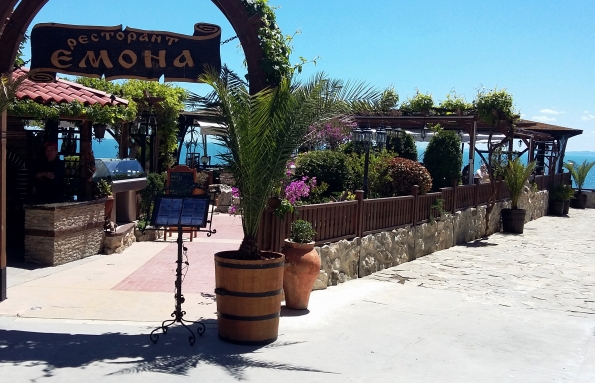
The view of the sea from this place was beautiful, and there were so many flowers!
3. May 24th is St. Cyril and Methodius’ Day.
Also known as ‘Bulgarian Education and Culture and Slavonic Literature Day’ (catchy, I know), this is a day to celebrate all things Bulgarian. While working on site one unassuming morning, we started to hear what sounded like some sort of parade or marching band. Soon after, my professor told us to go walk down the street to a little square. Upon arrival, we saw seven schoolchildren playing what looked like a collection of brass instruments straight out of Dr. Seuss.
It took some extensive Google-ing, but I found that these horns are called several names including ‘Martin’s trumpets’. Not only was there a whole band of these amazing horns, plus one rather unenthused boy on a drum, but many other children were decked out in full-on traditional Bulgarian clothing. It was absolutely beautiful. Embroidered skirts, headdresses, and plenty of bling made these outfits absolute showstoppers.
Of course, that was the one day I didn’t have my phone as it was spending some quality time in a bag of rice after getting a bit too well acquainted with some water. Nobody’s perfect.
4. Moving swiftly onward, roses are a really big deal in Bulgaria.
Every shop I went to seemed to have some sort of rose-themed paraphernalia. There were entire stores filled with soaps, perfumes, oils, and lotions. A woman who ran the shop across from where I was working would cross stitch little roses onto squares for people to buy. I couldn’t resist a little rose-shaped soap, and I got a cross stitched rose fridge magnet as well.
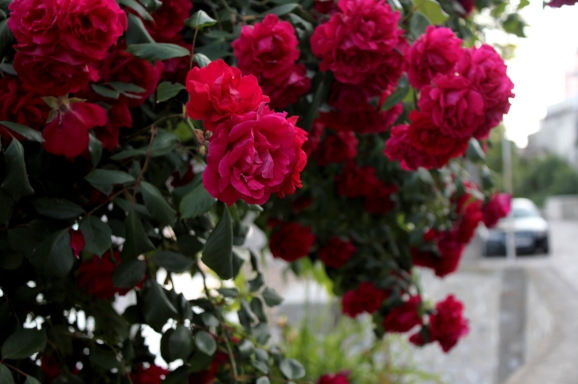
This is from one of my many evening walks. It only takes an hour to circle the whole town, and there is no shortage of scenic viewpoints.
5. ‘Sach’ is not just a catchy abbreviation for a bag.
Sach (сач) was definitely one of my favourite food things I found in Bulgaria (closely followed by shopska salad). It’s basically just grilled veggies and/or meat served on these awesome little clay plates placed on metal stands. The word ‘sach’ actually refers to the clay plate itself, but it is also used in reference to the dish. I really wanted to get one to take home and use, but sadly they were too big to fit in my suitcase.
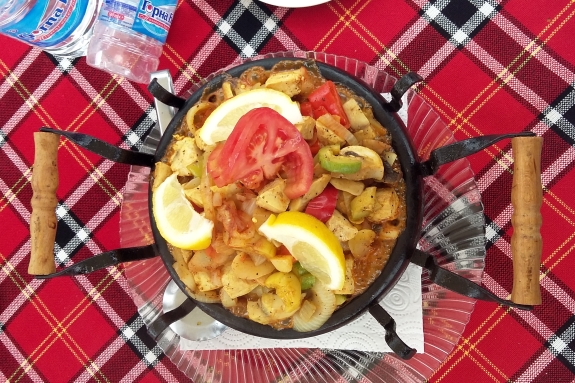
This actually wasn’t the best sach I ate in Nesebar, but it was the best photo I had. I did get to eat it on a pirate ship though, so that made it ten times better. That’s right – a pirate ship restaurant. New life goal right there.
6. Turns out I might be allergic to the Black Sea.
Yup. On my list of exciting firsts in Bulgaria, I can’t forget to add ‘First Allergic Reaction’. Nesebar sits on the west coast of the Black Sea, and there are many amazing beaches in the surrounding area (including a relatively famous resort known as Sunny Beach). I don’t actually know if it was a reaction to something where I worked or the water or something completely different, but the evening after I went swimming in the Black Sea I got hives on my hands and feet.
That definitely put a damper on the experience. It was so itchy – like poison ivy itchy. Luckily for me, I was rooming with a girl who is allergic to basically everything, so I was in good hands. Between her and the incredibly sweet woman who worked at our hotel, we managed to find plenty of allergy remedies. I would have been at a complete loss trying to figure out what to do in English let alone Bulgarian. I’m just thankful it wasn’t some late-developing allergy to cats.

My saviours.
7. Bulgarian prehistory kicks butt.
Prepare yourself for a bit of an archaeology nerd rant. Forget Bulgarian history, Bulgarian prehistory is an amazingly complex story full of mysteries, firsts, and amazing cultures. One of the most famous of these is the Varna culture. This is a Copper Age (or Chalcolithic) culture active during the 5th millennium BCE.
Current knowledge of this group comes from a necropolis cemetery discovered near a city of the same name. It was complex, hierarchical society that is thought to have worshipped a ‘mother goddess’. The crazy thing is this site contained the oldest gold objects found in Europe. It is thought that this technology traveled west from the Middle East, but it may have developed independently in this region.
We were given a tour of the Museum of Ancient Nessebar where they have a selection of these objects on display. Sadly I have no pictures, but I can tell you they were so delicate and detailed that it is simply mind-blowing to think of how old they are. These people had mastered working these metals before the Egyptians had built the pyramids. That is bananas, people!
And it doesn’t stop there. According to our tour guide, archaeologists are still not entirely sure what happened to the Varna culture. Towards the end of the 5th millennium BCE the cemetery was no longer in use, and the culture seems to disappear. The next phase of activity is Thracian, a group thought to be one of the oldest ancestors of modern Bulgarians today. How did this transition occur? What happened to the populations that used the Varna cemetery? WE DON’T KNOW, AND THAT IS SO COOL.
8. You can fit more than ten churches on a small island. In fact, you can fit 40.
Aside from being one of the oldest towns in Europe (est. a mere 3,200 years ago), Nesebar was declared a World Heritage site because of the sheer volume of churches present on the little island. It is thought that up to 40 churches may have been present at one time. However, there is only information regarding 23 of these according to Bulgaria Travel. Some are still in use, some have been converted to museums, and others have been reduced to their foundations alone.
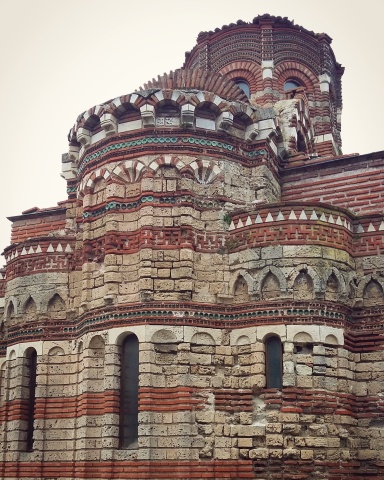
The Church of Christ Pantocrator is a medieval Orthodox church, one of the few still standing in the city. The walls of all Orthodox churches are bursting with beautiful icons, leaving little blank space. This was one of my most liked photos from Bulgaria on instagram.
9. Topless beaches are pretty amazing.
Now I use the words ‘topless beach’ here loosely as taking your top off is not the point of the beaches around Nesebar. It is simply socially acceptable for both men and women to walk around without tops on. And though no, I did not join in, it was refreshing to see topless women in a non-sexualised way. Most of the time the only female bodies we see are photo-shopped to ‘perfection’. There were a few topless women around the beach, and there was no uncomfortable staring, cat-calling, or creepiness. People were just really chill. I can dig that.
10. And finally, Nesebar is cat lady heaven.
There are literally cats everywhere. There were cats of all colours, shapes, and sizes. I’m talking nice cats, mean cats, pretty cats, ugly cats, and everything in between. A particular kitty, known fondly as ‘site cat’ came to visit us every day during the few weeks we were working. Mostly she wanted snacks, but I think she loved us as well.
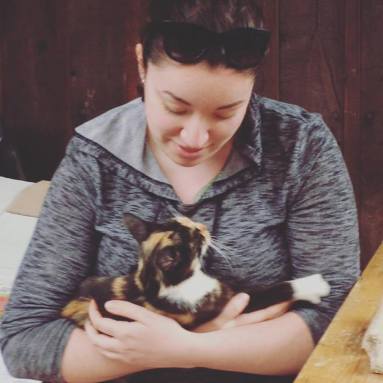
It was always a good day when site kitty wanted a mid-morning cuddle session.
And that’s all for this week, folks! Next week I’m going to talk about Bulgarian food (yes, the food merits an entire post of its own), and I have finished a few books from my shelf recently, so I will be talking about those in the near future as well.
I just love this post. It conveys your enthusiasm and appreciation of all your Bulgarian discoveries. Bulgaria is on so few people’s travel map and undeservedly so (though I suppose it means far less crowding for the rest of us). Thanks for sharing your experience and your photos.
LikeLike
I’m glad you think so! I’m going to recommend Bulgaria to everyone now. There is so much to see, and it’s budget-friendly. Definitely a hidden gem 🙂 Thanks for your comment.
LikeLike
Got your postcard from Bulgaria a few days after you were here. If the photo on the card is to be believed, and I’m guessing it is from your post, it really does look beautiful.
LikeLike
It really was! It was funny. This was basically the ‘Jersey Shore’ of Bulgaria. Everyone goes there for holidays during the summer. At least that is what it reminded me of.
LikeLike
Pingback: I Came, I Saw, I Ate: My Perfect Day in Nesebar, Bulgaria | We'll Jump Off That Bridge When We Get To It